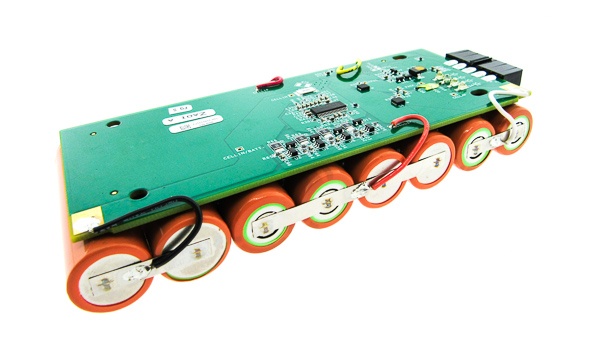Contributed commentary Anton Beck – Battery Product Manager, Epec
When designing and manufacturing battery packs, it is important to recognize that there will be limitations when dealing with specific costs and performance. In certain instances you may be in a position where you will have to increase the cost of the battery pack or decrease an aspect of the performance. Here are some limitations and what to expect going forward.

Custom Battery Packs vs Off-The-Shelf
The largest limitation will most likely come from using off-the-shelf battery packs. Generally, battery packs are designed to power a device. Using an off-the-shelf battery pack may force the developer to work within strict parameters based upon the existing battery’s capabilities. Whereas custom batteries are designed to work with an end users application – designed specifically to each requirement.
Custom electronics are designed to do specific functions or additional functions that regular batteries can’t. Your off-the-shelf battery is pretty basic, straightforward with basic circuitry for safety. It won’t have any specific parameters for fuel gauging, nor will it have a transportation certification.
A custom battery is developed to provide the requirements a customer wants. They’re able to select all the bells and whistles for their device, the provider will manage the regulatory approval, and the intellectual property (IP) is owned by the customer so that long-term support is there. It is inevitable that an off-the-shelf battery will be discontinued at some point and won’t be available down the road.
Entry Level Custom Battery Pack vs High End Custom Battery Pack
With a basic battery pack to support the device, you would use the same type of chemistry and same model cells. The difference would be in the electronics. The electronics for the basic battery are the basic safety for over-voltage, discharge, and short-circuiting protection.
With the custom battery pack you will have electronics that would be designed for specific requirements that add features such as fuel gauging, which tells the state of charge of the battery, as well as other custom features. It has electronics that would put the battery in a sleep mode when it’s not used to conserve on energy. It would have a custom charge rate designed into the electronics that would allow the battery to charge at specific voltages and cutoffs, to provide longer life cycles on the battery as a result of a more gentle usage.
You can have all or any of those features added depending on how you plan on managing or using the battery itself. So you can get your basic model or you can get your custom model, which has all the bells and whistles, which are in the electronics.
Common Cost Drivers
The cell brand is a cost driver. Some brands are of the top-tier cell manufacturers that the customer wants to use, so the cost of the cell, the brand, and the manufacturer are all cost drivers. Cell balancing is pretty common with all packs but cost adders would be around the charging and the fuel gauging features.
Basically all of the electronic choices of the design will add cost such as the charger board that would be on the battery, the battery management system, and the fuel-gauging IC components that are chosen.
Increasing Performance
A cell balancing feature will improve the performance because if the pack isn’t balanced well, over a period of time over multiple cycles, it will slowly drift further apart. The battery will virtually lose life cycles and energy defaulting to the weakest cell in the pack
Another way to increase performance is with the charging profile. If you design the charging system to slowly charge the battery, and not take it to the highest potential voltage, keep it below the maximum threshold, and then discharge down to a healthy state of discharge (prior to the cutoff voltage), your cycles will be “gentler”. The battery is not taken to its maximum performance over the cycles it will see, so you obtain more life cycles on your battery pack and it will last longer.
Another factor is heat dissipation considerations. If the battery is closed in a tight space, when you’re charging it, the cells will heat up. This will reduce your life cycles, so factoring in ample spacing into the design, cell configuration for heat dissipation, cell balancing, and charge levels are all key factors.
Conclusion
The more complex the battery becomes, the more details need to be considered. Since electronics drain your battery over time you’ve got to factor in what electronics are going be applied to the battery, how the battery is going to be used, and consider the conditions the batteries will be used in. All those parameters are determined at the onset of the project, so you understand the objective and can design the battery to get the maximum performance and maximum life cycles. A custom solution may cost a little more, but there are long term advantages of designing the battery to your specific application.
See more battery related posts from Epec’s Manufacturing Blog.










